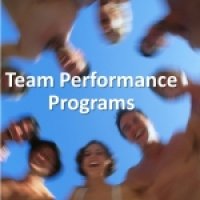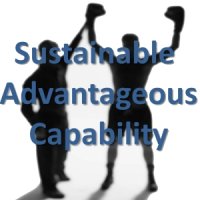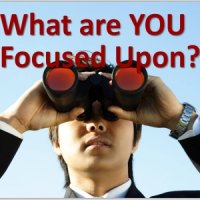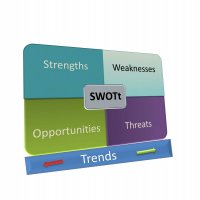<p style="margin:0in;font-family:Calibri;font-size:18.0pt"><span style="font-size:28px;"><span style="font-weight:bold">OptimizePeople October Update</span></span>[[{"type":"media","view_mode":"media_large","fid":"622","attributes":{"alt":"","class":"media-image","height":"172","style":"font-family: 'Lucida Grande', 'Lucida Sans Unicode', sans-serif; font-size: 13.008px; line-height: 1.538em; width: 120px; float: right; height: 43px;","typeof":"foaf:Image","width":"480"}}]]</p><p style="margin:0in;font-family:Calibri;font-size:14.0pt"><span style="font-weight:bold;font-style:italic"> Assess to Understand</span></p><p style="margin:0in;margin-left:.375in;font-family:Calibri;font-size:14.0pt"><span style="font-weight:bold;font-style:italic"> Understand and Execute Optimally</span></p><p style="margin:0in;margin-left:.375in;font-family:Calibri;font-size:11.0pt"> </p><p style="margin:0in;margin-left:.375in;font-family:Calibri;font-size:11.0pt"> </p><p style="margin:0in;font-family:Calibri;font-size:16.0pt"><span style="font-weight:bold">Improving the 3 P's by Really Improving Culture and Engagement.</span></p><p style="margin:0in;font-family:Calibri;font-size:11.0pt"> </p><p style="margin:0in;font-family:Calibri;font-size:11.0pt">Many culture (or engagement) initiatives have little impact because they are focused on a one-time event or perhaps a series of educational or awareness activities that often lack focus. They feel like the right thing to do and do typically further interpersonal understanding and internal communication. After that however, things largely revert back to "the way we were".</p><p style="margin:0in;font-family:Calibri;font-size:11.0pt"> </p><p style="margin:0in;font-family:Calibri"><span style="font-size:11.0pt">Improving </span><span style="font-weight:bold;font-size:14.0pt">productivity, pro-activity and performance (3P's)</span><span style="font-size:11.0pt"> should be the focus and the result of an effective effort should be easily measured. Bottom line (outcome metrics) results should be evident but focusing on more timely causal metrics and observations are key to managing and actually achieving the improvement in these 3 P's. We believe you'll agree that to achieve significant improvement in the 3P's, through a focus on improving engagement or the culture, it requires understanding the components that make up engagement and culture.</span>[[{"type":"media","view_mode":"media_large","fid":"620","attributes":{"alt":"","class":"media-image","height":"480","style":"font-family: 'Lucida Grande', 'Lucida Sans Unicode', sans-serif; font-size: 13.008px; line-height: 1.538em; width: 389px; height: 480px; float: right;","typeof":"foaf:Image","width":"389"}}]]<span style="font-size: 11pt; line-height: 1.538em;"> There is only one system that I know of, that is proven to measure these traits.</span></p><p style="margin:0in;font-family:Calibri;font-size:11.0pt"> </p><p style="margin:0in;font-family:Calibri;font-size:11.0pt">The Harrison Assessment system is the leading system for predicting success for hiring, promotions and talent planning and is rapidly becoming a most valuable tool for improving culture with accompanying improvements in productivity, pro-activity (engagement, attitude, enthusiasm, whatever you call it!) and performance. The added opportunity with the Harrison and culture or engagement or work environment improvement programs(whatever you choose to call it) is that it uniquely provide the validated information on the underlying traits that make up the culture and the level of engagement seen. </p><p style="margin:0in;font-family:Calibri;font-size:11.0pt"> </p><p style="margin:0in;font-family:Calibri;font-size:11.0pt">By providing accurate data on motivations, natural tendencies, task and work environment preferences as well as the job specific implications of these, we provide what is really the missing piece of the puzzle for engagement and culture initiatives. Without the understanding of these, you cannot make sound decisions or take actions with predictable success. Without the ability to measure this, as well, for new employees, you cannot maintain your success.</p><p style="margin:0in;font-family:Calibri;font-size:11.0pt"> </p><p style="margin:0in;font-family:Calibri;font-size:11.0pt">A mini case study is attached below! Please let me know if you have any questions.</p><p style="margin:0in;font-family:Calibri;font-size:11.0pt"> </p><p style="margin:0in;margin-left:.375in;font-family:Calibri;font-size:11.0pt"> </p><p style="margin:0in;font-family:Calibri;font-size:16.0pt"><span style="font-weight:bold">Lessons from the Paradox </span></p><p style="margin:0in;font-family:Calibri;font-size:11.0pt"><span style="font-style:italic">How well you do in a specific role or job, is largely determined by your natural tendencies under stress. The Harrison Assessment surfaces these tendencies and working with this results has led us to many lessons for improving effectiveness with self-awareness.</span></p><p style="margin:0in;font-family:Calibri;font-size:11.0pt"> </p><p style="margin:0in;font-family:Calibri;font-size:11.0pt">How much of a taste for risk do you have? Do you avoid it, need it or perhaps thrive with it? That, by itself has relevance, but not that much alone - the true power is due to understanding your natural tendency in the paradox. Your attitude towards risk needs to be considered versus your tendency to analyze pitfalls. This is your tendency and likelihood to consider and assess different scenarios to understand what might go wrong. It relates to how effectively you make long term decisions. About 40% of people in business fall mildly or significantly in the overly cautious category with low risk tolerance and high tendency to analyze pitfalls. About 18% fall into the impulsive category with a need and high tolerance for risk and low tendency to analyze pitfalls. And just under 20% of people have a natural strength here, able to tolerate significant risk but balancing it with a strong tendency to analyze pitfalls and therefore take calculated risks. When you become conscious (accurately) of your typically subconscious natural tradeoffs, especially if you manage stress well, the awareness helps you make better decisions and take more effective actions.</p><p style="margin:0in;font-family:Calibri;font-size:11.0pt"> </p><p style="margin:0in;font-family:Calibri;font-size:11.0pt"> </p><p style="margin:0in;font-family:Calibri;font-size:16.0pt"><span style="font-weight:bold">Team Lessons…</span></p><p style="margin:0in;font-family:Calibri;font-size:11.0pt"><span style="font-style:italic">The Harrison Assessment reveals insights on what drives behaviors and how we typically act under normal stress and under extreme stress. It also reveals how likely we are to see certain "strong" behaviors or imbalances. During the debrief process and even more so, in executive team building sessions using these tools, we've continually learn lessons in how to improve and sustain a high performing team.</span></p><div> </div><p style="margin:0in;font-family:Calibri;font-size:11.0pt">Another lesson learned…</p><p style="margin:0in;font-family:Calibri;font-size:11.0pt"><span style="font-size: 14.6667px; line-height: 20.0063px;"> Communication</span><span style="font-size: 11pt; line-height: 1.538em;"> </span><span style="font-size: 11pt; line-height: 1.538em;">tendencies and what causes them are typically misunderstood which causes conflict , avoidance behaviors and an inability to work as a team. When I discussed this individually with executives, I often get a recoiled response as if to say this is elementary, but after they think about, they realize perhaps their reaction is a bit elementary if not inaccurate. Let me illustrate what I mean through an example.</span></p><p>[[{"type":"media","view_mode":"media_large","fid":"621","attributes":{"alt":"","class":"media-image","height":"480","style":"line-height: 1.538em; font-size: 13.008px; width: 220px; height: 330px; float: left;","typeof":"foaf:Image","width":"320"}}]]</p><p style="margin:0in;font-family:Calibri;font-size:11.0pt"> </p><p style="margin:0in;font-family:Calibri;font-size:11.0pt">Scenario: Two VPs having to work together and typically doing so with great difficulty and much less than they should. One is naturally a very blunt individual but strong interpersonal skills to mitigate the impact. <span style="font-size: 11pt; line-height: 1.538em;">The other, is naturally highly diplomatic and not very frank (a natural tendency termed evasive). They only interact when they must- except at random social events…. They each define their relationship as difficult and not too productive. The blunt one communicates what he needs to, the other, feels very stressed in their conversations and is the junior member of the team. Most times when they communicate, his stress reaction is activated, that is, he flips to the opposite of his diplomatic tendency becoming very blunt, the opposite of his behavior in social situations. This variation, as you could predict, has caused trust issues but now understood (after considerable emotion between the two), their relationship is much more productive, their time together more optimal(and much greater) …</span></p><p style="margin:0in;font-family:Calibri;font-size:11.0pt"> </p><p style="margin:0in;font-family:Calibri;font-size:11.0pt">One story, but indicative of many others substantiating the value not only of increased self-awareness, but also of increased team member awareness.</p><p style="margin:0in;font-family:Calibri;font-size:16.0pt"> </p><p style="margin:0in;font-family:Calibri;font-size:16.0pt"><span style="font-weight:bold">Additional Resources:</span></p><p style="margin:0in;font-family:Calibri;font-size:11.0pt"> </p><p style="margin:0in;font-family:Calibri;font-size:11.0pt"><a href="https://www.linkedin.com/pulse/have-you-made-bad-hire-dan-harrison">Implications of Bad Hiring Decisions - Dr. Dan Harrison</a></p><p style="margin:0in;font-family:Calibri;font-size:11.0pt"><a href="https://www.linkedin.com/pulse/best-results-workplace-assessments-dan-harrison?trk=mp-reader-card">Getting the Best Results with Workplace Assessments</a></p><p style="margin:0in;font-family:Calibri;font-size:11.0pt"><a href="https://www.linkedin.com/pulse/difference-between-ipsative-normative-tests-dan-harrison?trk=prof-post">Assessment Mechanics - Dr. Harrison's Assessment</a></p><p style="margin:0in;font-family:Calibri;font-size:11.0pt"> </p><p style="margin:0in;font-family:Calibri;font-size:11.0pt"> </p><p style="margin:0in;font-family:Calibri;font-size:11.0pt"> </p><p style="margin:0in;font-family:Calibri;font-size:11.0pt"> </p><p style="margin:0in;font-family:Calibri;font-size:11.0pt">[[{"type":"media","view_mode":"media_large","fid":"624","attributes":{"alt":"","class":"media-image","typeof":"foaf:Image"}}]]</p>
 "The U.S. Department of Labor has estimated the costs to replace an employee to be approximately 1/3 their annual salary; but when you start looking at the impact of hiring the wrong employee and having to replace them, some studies say 2.5 times annual earnings, some 4 times and some even higher." AGILEdge
"The U.S. Department of Labor has estimated the costs to replace an employee to be approximately 1/3 their annual salary; but when you start looking at the impact of hiring the wrong employee and having to replace them, some studies say 2.5 times annual earnings, some 4 times and some even higher." AGILEdge





















